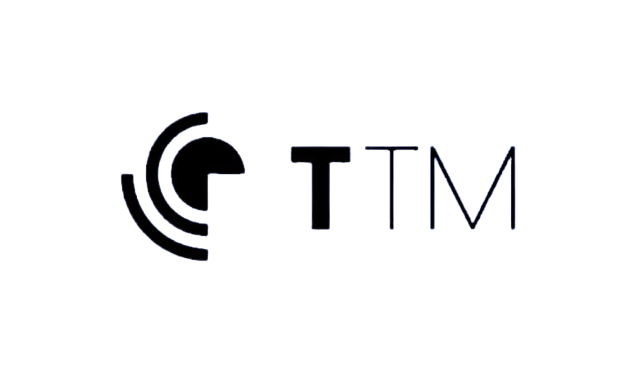Troubleshooting Across Devices and Industries
Whether you're working with computers, electronics, appliances, or other systems, troubleshooting issues and finding solutions is an important process. This article provides an overview of troubleshooting methodology and addresses some of the most common problems encountered with various types of hardware, software, and other applications. Read on to learn proven techniques for identifying and resolving technical glitches.
Common Computer Troubleshooting Problems and Solutions
Computers are complex machines with many potential points of failure. Hardware problems like faulty RAM, broken ports, or overheating components can cause crashes and slow performance. Outdated drivers, malware infections, and software conflicts also plague PCs. Basic troubleshooting starts with checking cables/connections, scanning for viruses, updating drivers and OS, and reviewing event logs for errors. Hardware diagnostics and testing individual components help isolate faulty parts.
Troubleshooting Hardware Issues
When hardware like motherboards, power supplies, or storage devices fail, it prevents bootup or causes instability. Monitor troubleshooting involves checking cables first, then testing the monitor on another system to verify the issue. Printer problems are commonly paper jams, low toner, or driver/connection errors resolved through firmware updates and port/cable changes.
Solving Software Problems
Troubleshooting software bugs, crashes and freezes requires reviewing error messages, verifying compatibility with the OS/other programs, and reinstalling/repairing the troubled application. Linux users can solve package, display, and network issues through the terminal using diagnostic commands. Microsoft Fix It helps resolve Windows problems by running automated checks and offering solutions.
Industry-Specific Solutions
Technicians servicing specialized systems learn troubleshooting techniques particular to those applications. Boiler repair experts diagnose thermal and pressure faults. Camera technicians solve lens, sensor, battery and connectivity glitches. Shredder repair involves mechanical and electrical testing to identify worn parts or board failures.
User Authentication Troubleshooting
Access issues arise from incorrect credentials, expired passwords, network connectivity problems, or configuration errors. Thoroughly testing and documenting each step in the authentication process methodically eliminates variables to pinpoint the root cause.
Additional Resources
Manufacturers post guides with common problems/solutions, part replacement videos, and support forums. Online tutorials explain troubleshooting methodologies for everything from UV printers and photo cubes to remote vehicle starters. The Microsoft Documentation Center provides in-depth articles on software, services, and development troubleshooting.
Adopting a systematic approach, gathering symptoms methodically, and ruling out potential causes efficiently resolves the vast majority of technical issues. With practice, these troubleshooting skills transfer across industries and applications for effective problem-solving. Refer back to this guide as a starting point for your next trouble ticket!
Troubleshooting is a crucial process for resolving issues with technology, industrial systems, and more. This guide provides an in-depth look at troubleshooting 12V solutions, hardware, computers, and specialized devices. Whether you service remote starters, boilers, cameras, or other applications, the methodical approach outlined here will help you diagnose and fix problems.
12 Volt Solutions Remote Start Troubleshooting
12V remote start systems face ignition, programming, and connectivity issues. Symptoms include failure to start/stop the engine, flashing lights, or dead remotes. Thoroughly test connections and inspect for wiring damage before reprogramming the unit. Maintain battery voltage for reliable operation.
Hardware Troubleshooting Fundamentals
Distinguishing hardware from software problems is the first step. Methodically test individual components, starting with the most common culprits - faulty RAM, corrupted BIOS settings, or overheating CPUs. The multimeter helps diagnose shorts, voltages, and motherboard faults.
Navigating Common Computer Problems
Boot issues stem from drivers, BIOS settings, or bad sectors on drives. Connectivity errors involve testing cables/ports and updating network drivers. Storage glitches require virus scans and S.M.A.R.T diagnostics on drives. Graphics issues often mean outdated display drivers.
Specialized Troubleshooting Areas
Humidifiers may need cleaning, new filters, or calibration checks. IBM i Access Client troubleshooting centers on connectivity, permissions, and compatibility. Boilers commonly experience ignition problems, limit switch faults, or low water levels. Cameras may have lens, battery, or connectivity issues resolved through firmware updates.
Troubleshooting Specific Technology Devices
Monitors with flickering, lines, or no signal require checking cables first before testing the monitor on another system. Slow PCs point to malware, fragmented drives, or services using excessive resources. Shredders jam from oil or debris - cleanings help. Printers spool or quality issues stem from drivers, connections, or low toner.
Mastering troubleshooting methodology allows swift diagnosis across industries. This guide provided a starting point - continue honing skills through hands-on experience and manufacturer documentation. Troubleshooting saves time and money by quickly resolving issues.
Software Troubleshooting Tactics
Focus on identifying common software faults and providing a detailed troubleshooting guide for the Microsoft Fix It Solution Center. I'll also discuss troubleshooting basics for Linux systems. Given the importance of authentication, I'll explain how to deal with common user management issues.
Troubleshooting Tips for Common Electronics
Diagnose typical motherboard problems and solutions. UV printers are growing in popularity, so tips for solving those issues will help readers. As one of the top camera brands, troubleshooting guidance for Sony models is key.
Troubleshooting Tips for Common Electronics
Emphasizes a systematic approach. I'll analyze and resolve general business system problems. The approval process is critical, so sharing how to troubleshoot common superbadge unit issues has value. Concept Solutions shredders also require maintenance guidance.
Troubleshooting Through Documentation
Documentation plays a role, show how PDF guides can aid hardware troubleshooting. I'll also highlight using PPT for clear explanations.
FAQs in Troubleshooting
Addresses frequently asked troubleshooting questions like the basic troubleshooting process, hardware vs software determination, and when professional help is needed.
I'll recap best practices and encouragement for DIY efforts. I'll also discuss when professional assistance is most appropriate.
The appendix defines troubleshooting terms and recommends helpful resources. It also provides support contact details. I'll encourage bookmarking and sharing success stories to help others with their troubleshooting journeys. Please let me know if you need any part of the outline expanded upon. I'm ready to start drafting the article now.












0 Comments